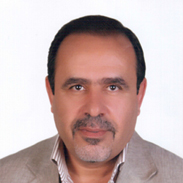Articles > > Abbas in Beirut... The President Returned, but the Weapons Remain
Articles - Others - Date: 2025-05-28
President Mahmoud Abbas’s visit to Beirut has ended, but its repercussions remain unsettled. The contentious issue of “weapons in the camps” dominated discussions; yet, the visit’s tangible outcomes remain unclear and uncertain. While the visit drew considerable attention due to internal Lebanese politics and wider regional and international influences, it ended up complicating the Palestinian situation rather than advancing its organization. How did this happen ?
Leading up to and during the visit, the primary focus was on “disarming the camps,” as Palestinian weapons remain confined to those locations. These aims were consistently framed in grand slogans such as “merciful on the surface, torturous at the core,” with a key focus on stripping the enemy of any excuse. Appeals to state sovereignty, the rule of law, and a monopoly on weapons weren’t just principled, they were tactical, designed to deny adversaries any justification for interference.
Undoing six decades of entrenched armed presence is a monumental task that required President Abbas to engage in meaningful dialogue with all armed factions. These include groups within the PLO, which he chairs, as well as Hamas, Islamic Jihad, and additional Islamic groups and factions that have gathered in the camps over the past quarter century—a period that has witnessed the proliferation of the phenomenon of armed Islamic movements.
However, this crucial step did not take place. Instead, the “sole legitimate representative” seemed to believe that holding the PLO leadership alone entitled him to act unilaterally, sometimes even against the will of the majority. This reflects a misuse of the authority granted by the PLO leadership and a dismissal of Palestinian actors on the ground who often wield greater influence than the central leadership itself.
Ramallah appears to have overlooked a crucial fact: verbal commitments to disarmament alone are not enough. On the ground, the situation is far more complicated. The president lacks the capacity to enforce these promises, constrained by internal Palestinian divisions and Lebanon’s complex political landscape. This reality called for broad consultations with key stakeholders before making bold pledges instead of excluding them. Those who resisted reforming the Palestinian leadership and turned their back on the calls and participation from the PLO, in its most precarious time, were unlikely to focus on making meaningful changes in Lebanon. As a result, the visit deepened internal Palestinian divisions and added another contentious issue, rather than paving the way for meaningful, more comprehensive and long term solutions.
The handling of this sensitive issue was predictably shallow, showing little awareness of the serious challenges Palestinians face in Lebanon. Given his firm opposition to armed groups in the West Bank and Gaza, President Abbas’s stance against weapons in Lebanon’s camps comes as no surprise. He had called for disarmament years ago, but at the time, no Lebanese party was willing to accept custody of the arms or engage in the process. Abbas continues to reiterate the idea of a “monopoly of arms” under the slogan “one authority, one weapon, one law”—a phrase he reiterated in Baabda, the Grand Serail, and during meetings with representatives of a certain Lebanese community. Yet, on the ground, this approach has failed to protect Palestinians in the West Bank or Gaza, nor has it secured Palestinian Authority institutions or territories under the Oslo Accords. This disconnect between rhetoric and reality left many Lebanese skeptical of the “expertise” and advice offered during the visit.
Some Lebanese officials, especially those opposed to Hezbollah and its shiite-duo allies, welcomed Abbas’s calls in response to Lebanon’s internal tensions. They hoped that disarming Palestinian camps would set a precedent and increase pressure, particularly from the U.S., Israel, and some Arab states, for Hezbollah to disarm as well. But Lebanon’s security agencies remained wary, carefully analyzing the proposal before taking any steps.
Sources indicate that behind closed doors, meetings between Lebanese security officials were far less optimistic than public statements and media reports suggested. The Lebanese team voiced serious doubts about the Palestinian delegation’s ability to follow through on its commitments. Armed with detailed intelligence on the Palestinian armed presence, including personnel, weapons stockpiles, storage locations, and factional distribution, the Lebanese side confronted their Palestinian counterparts directly. They recommended starting disarmament with five camps controlled by Fatah and the Palestinian Authority in Beirut, Tripoli, and the Bekaa, postponing others to a later phase. This approach placed the responsibility on the Palestinian side and stirred tensions within Fatah, where many felt excluded from the decision-making process.
The decision to start disarmament with these camps sparked important questions among both Palestinians and Lebanese: Why were the southern camps near Tyre, south of the Litani River, not prioritized ? Focusing there would align with UN Resolution 1701 and ongoing U.S.-led efforts to monitor the ceasefire and disarm Hezbollah in the region. This inconsistency raised doubts about the true motives behind the push to disarm the camps. Is the goal truly to stabilize southern Lebanon and enforce the ceasefire, or is it part of a broader regional and international agenda aimed at weakening “resistance movements” in Lebanon and Palestine—without offering compensation or guarantees that key objectives, such as reducing hostilities or Israeli withdrawal from occupied territories, will be achieved?
Operating under strict political and military orders to avoid using force against “camp weapons” due to the issue’s sensitivity, the Lebanese negotiation team largely rejected the narrative of the “sole legitimate representative.” Acknowledging the complex dynamics within the camps, they engaged other Palestinian factions in dialogue. It would have been more effective for President Abbas and his team to do the same before negotiating alone with Lebanon. A unified Palestinian dialogue could potentially open the door to talks on “camp security,” possibly preventing tragedies like Sabra and Shatila and advancing the civil, economic, and social rights long denied to Palestinian refugees in Lebanon. This urgency is heightened by the fact that some Lebanese factions treat permanent exile as the only solution, given the impossibility of return and their opposition to naturalization. For these groups, ensuring dignified living conditions for Palestinians in the camps remains off the table.
Lebanon’s sovereignty over its entire territory is clear and undisputed. Palestinians have no right to challenge the state’s monopoly on arms or its wider nation-building efforts. There is no special status for “camp weapons.” The Palestinian Authority’s approach during the visit did little to advance Lebanon’s interests or foster Palestinian unity. Crucially, it failed to address the issue of arms in the camps, leaving behind more questions than answers. Instead of laying the groundwork for internal reconciliation or renewed Palestinian-Lebanese ties, the visit appeared to align with ongoing U.S. pressure on resistance movements in both contexts—steered regionally by Steve Witkoff and, in Lebanon, by Morgan Ortagus.




